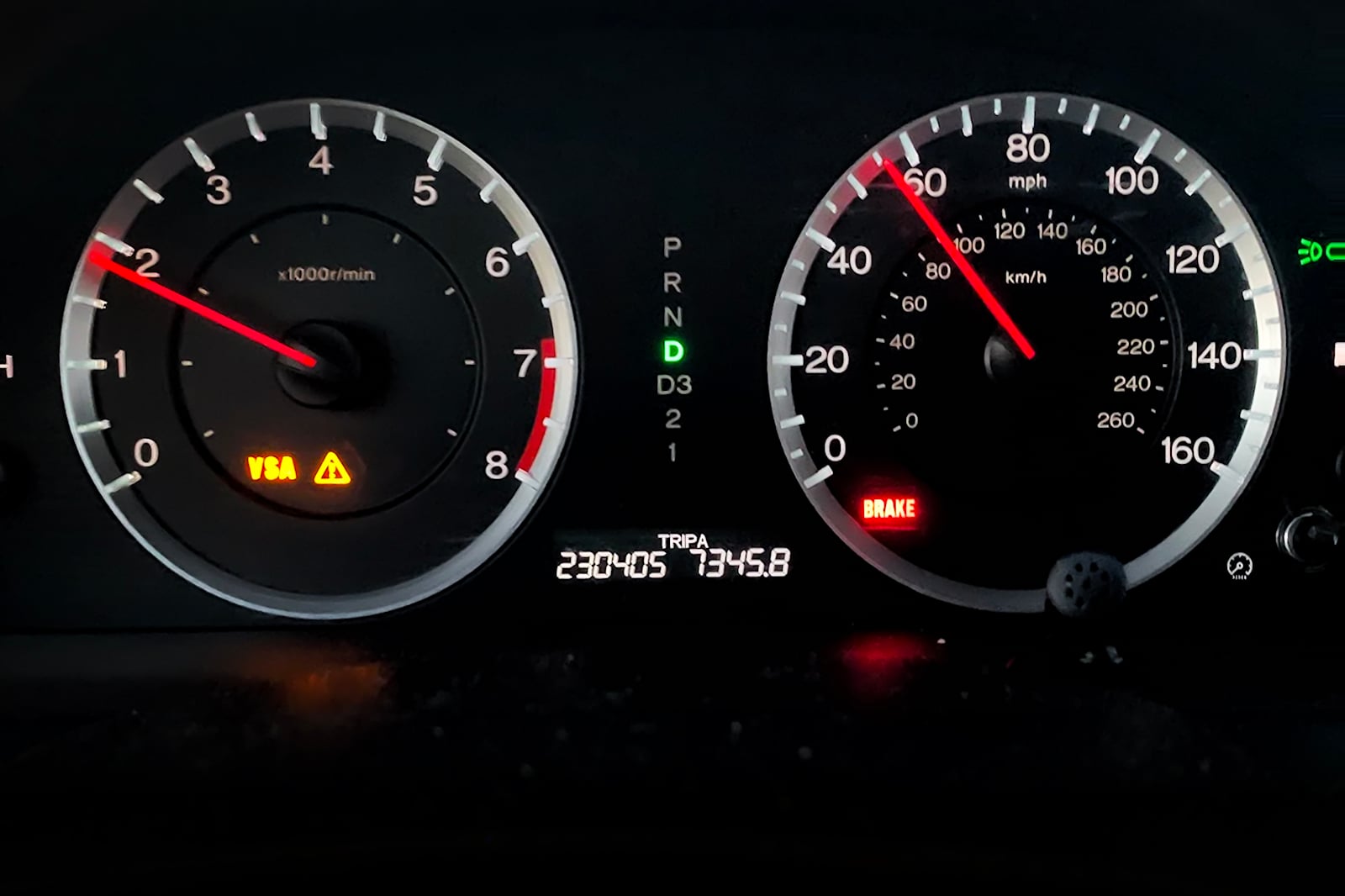Stability control is an important modern safety feature, and all volume manufacturers now include this helpful system as standard across their respective ranges. Honda calls their stability control system Vehicle Stability Assist (VSA), and it has become a fixture in its range over the past decades. The Honda Accord first offered VSA on the seventh-generation V6-engined model's 2006 facelift, and remained exclusive to the V6 models through 2007. It became standard across the range when the eighth-generation model arrived in the US in 2008. Its mode of operation is quite simple, with the VSA control unit continuously evaluating the car's dynamic behavior in real time, and intervening as needed by means of selective brake application and throttle modulation.
Usually, the VSA light on a Honda Accord will only illuminate upon the car's initial start-up, and should switch off after a second or so. If VSA senses a need for intervention during driving, a triangle enclosing an exclamation mark will flash inside the instrument cluster to indicate that the car is working to maintain its stability. Ninth-generation (and newer) Accords don't use the exclamation mark icon anymore, having replaced it with the conventional amber "skidding car" icon instead.
This VSA activation light will also turn on as a reminder if the driver has turned off the system by pressing the Honda Accord's VSA button located on the lower dashboard, next to the steering wheel. Note that, even if the VSA icon is on, the chances are that there's still a measure of electronic intervention at play because fully disabling VSA is only achievable by performing an intricate "pedal dance", which falls outside the scope of this guide.
That's not the important warning light, though, because there is a warning light marked "VSA" or "VSA Off" next to the activation light, and if this one switches on while driving, it means that no stability- or traction-control assistance is available due to a problem in either the VSA module or elsewhere in the car's control system.
The VSA warning light may illuminate not only due to a fault in the system but may also be triggered by problems not related to the stability-control system at all. If there's an issue elsewhere in the car, VSA will usually automatically turn off, and its warning light will turn on. Here are some of the likely causes for an illuminated VSA light on a Honda Accord:
All VSA-equipped Honda Accord models featured a dash-mounted override switch, but this doesn't completely disable VSA at all. Think of it as a midway setting that allows some wheel slip, but still keeps matters from getting out of control. Simply pressing the VSA switch again will turn it back on to full control and extinguish the activation light.
If the VSA warning light illuminates while driving, it means that the car sensed a problem with the stability control system and automatically switched it off. As a first resort, pull over to the side of the road at the earliest safe opportunity, turn off the car, wait a few seconds, and then start it again to reset the VSA light on a Honda Accord. We know that the VSA is automatically turned on in a Honda Accord upon engine start, but it should turn off again after a second or so. If the light remains illuminated, you'll need to visit your dealer to determine what it's complaining about, as they will perform a thorough check of the Honda Accord's VSA system.
Your Honda Accord will usually still be driveable with the VSA light on, but if the VSA light turns on along with a transmission warning light, it would be better to call a towing service. Just remember that while your Accord can still be driven even with the VSA out of commission, it won't have any stability enhancement in place, so exercise extra caution when accelerating and turning as there is no electronic nanny to help keep you safe.
The first point of action should be to reset the system by turning off the car and then restarting it after a few seconds. If the VSA warning light remains on after this, it indicates a problem elsewhere in the vehicle or an actual VSA malfunction, and may need professional attention. Here are some steps to follow to help determine the cause and potentially fix an illuminated VSA light on Honda Accord models:
You may be wondering how much it costs to fix VSA system problems on a Honda Accord, and the answer isn't a simple number - it depends on where the problem lies. If a VSA problem is caused by a faulty wheel speed sensor, the cost of a replacement sensor should be less than $40 each, and TPMS sensors cost about the same. Both of these are easy enough for a home mechanic to fit, and should resolve most issues with a Honda Accord's VSA system. However, if the error is related to an emission control problem, a new VCM solenoid will cost about $500 and as much again for labor, added onto a set of spark plugs and the labor to fit it all, which could amount to an easy $300, all in. ABS/VSA modulators cost upwards of $1,700 excluding labor, so first make absolutely sure that this is really the cause of your VSA troubles before committing to replacing this unit.
